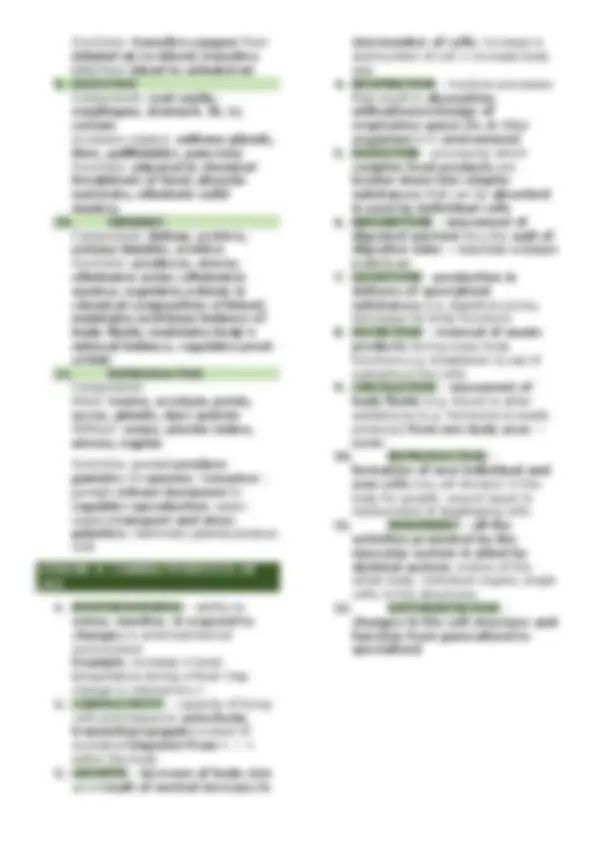CHAPTER 1: INTRODUCTION TO ANATOMY AND PHYSIOLOGY
LESSON 1: DEFINITION OF TERMS
ANATOMY (STRUCTURE)
Study of structures of the human
body and the relationship among
them
Greek words: Ana = “up” ,
temnein/temos/tomos = “to cut”
BRANCHES OF ANATOMY
1. REGIONAL ANATOMY – study of
specific regions of the body; e.g.
head or chest
2. SYSTEMIC ANATOMY – study of
structure of specific systems of the
body; e.g. nervous or respiratory
3. GROSS ANATOMY – study of body
structures that can be examined
without microscope
4. MICROSCOPIC ANATOMY – study
of structures with the aid of
microscope
5. DEVELOPMENTAL ANATOMY –
study of complete development of
an individual from fertilization to
death
6. PATHOLOGICAL ANATOMY – study
of structural changes in diseased
cells and tissues
7. HISTOLOGY – study of microscopic
tissue structure
8. RADIOGRAPHIC ANATOMY – study
of body structures that can be
visualized with x-rays, MRI, CT
scans
9. CYTOLOGY – study of cell
10. BLANCHOLOGY – study of
internal organs
11. EMBRYOLOGY – study of the
first 8 weeks of development
after fertilization of human egg
PHYSIOLOGY (FUNCTION)
Science of body function; study of
how body parts work
Greek words: Physis = “nature,
origin” Logos = “the
science/study of”
BRANCHES OF PHYSIOLOGY
1. NEUROPHYSIOLOGY – study of
functional properties of nerve
cells
2. CARDIOVASCULAR PHYSIOLOGY –
study of functions of the heart
and blood vessels
3. RESPIRATORY PHYSIOLOGY –
study of functions of the air
passageways and lungs
4. PATHOPHYSIOLOGY – study of
functional changes associated with
disease and aging
LESSON 2: LEVELS OF
ORGANIZATION OF THE HUMAN
BODY
The Six Distinct Levels Of Organization
Of The Human Body:
C – chemical
O – organelle
C – cell
T – tissue
O – organ
S – system
O – organism
1. Chemical – the simplest level of
the structural ladder
Includes: atoms (smallest unit of
matter) and molecules (two or more
atoms joined together)
Atoms : CHONPCaS are essential for
maintaining life
2. Organelles – small structure
contained within a cell that
performs one or more specific
functions
E.g. nucleus, ribosomes,
endoplasmic reticulum, etc.
3. Cell – basic structural and
functional unit of organism;
composed of chemicals
E.g. muscle cells, nerve cells,
epithelial cells
4. Tissue – group of cells and the
materials surrounding them that
work together to perform a particular
function.
-Four basic types:










